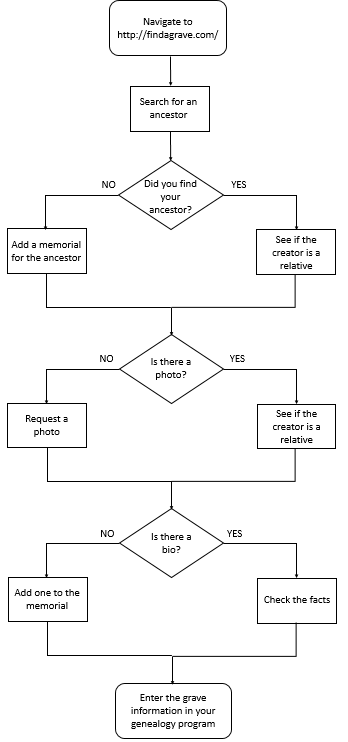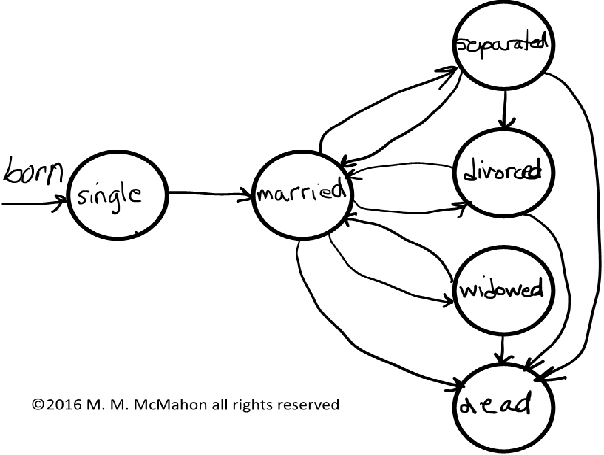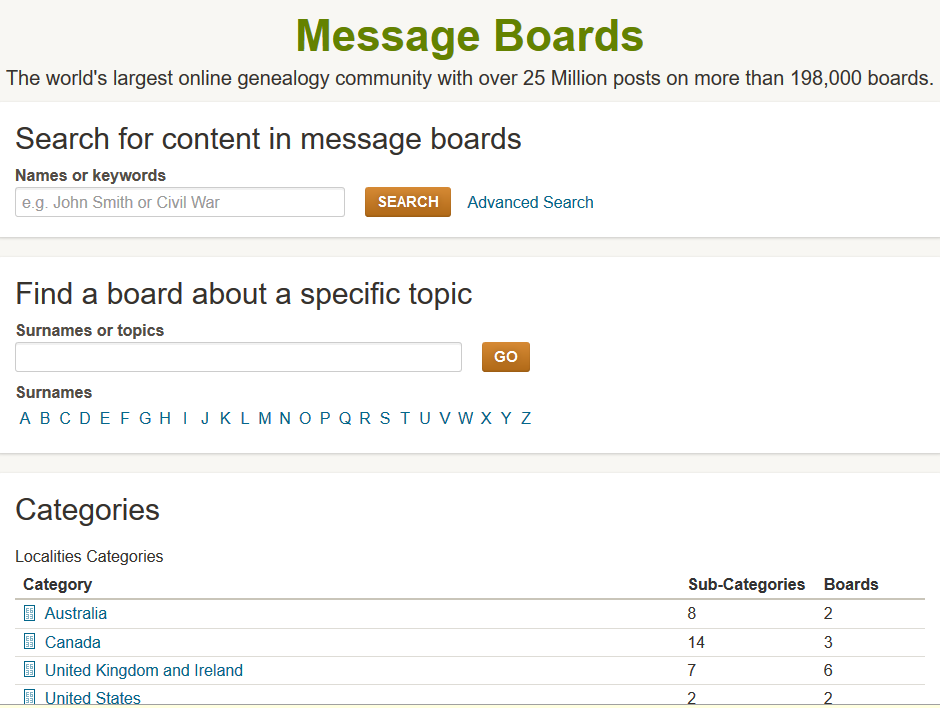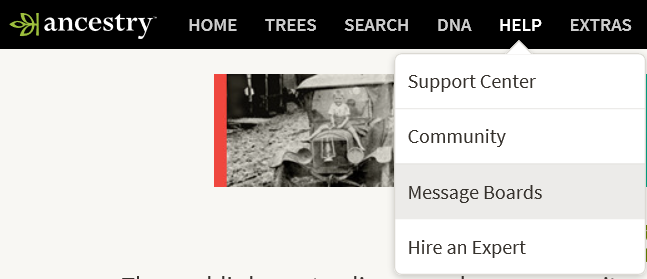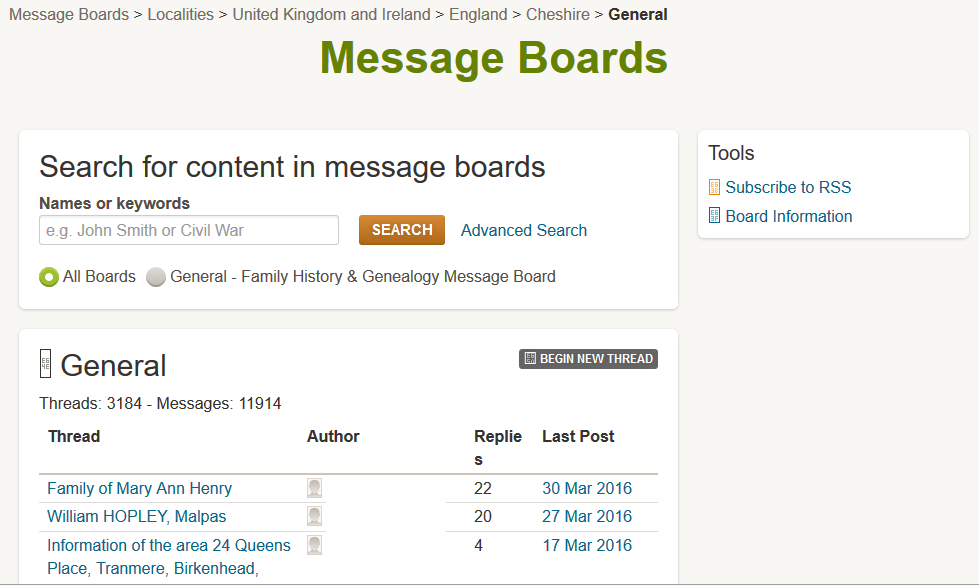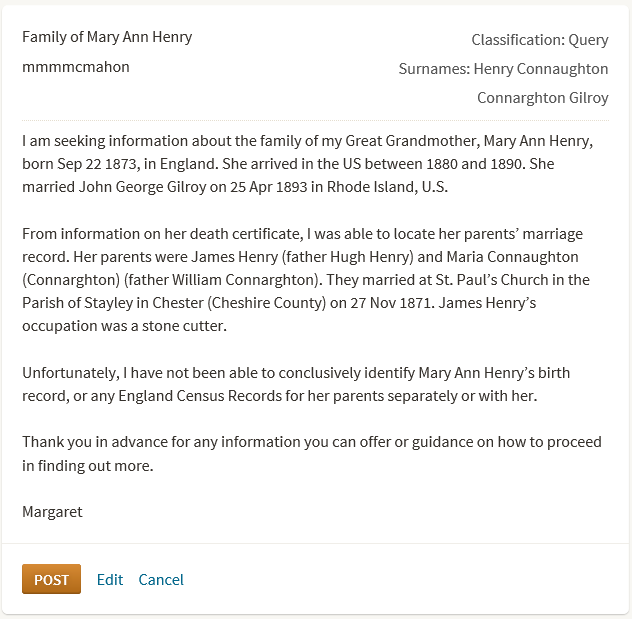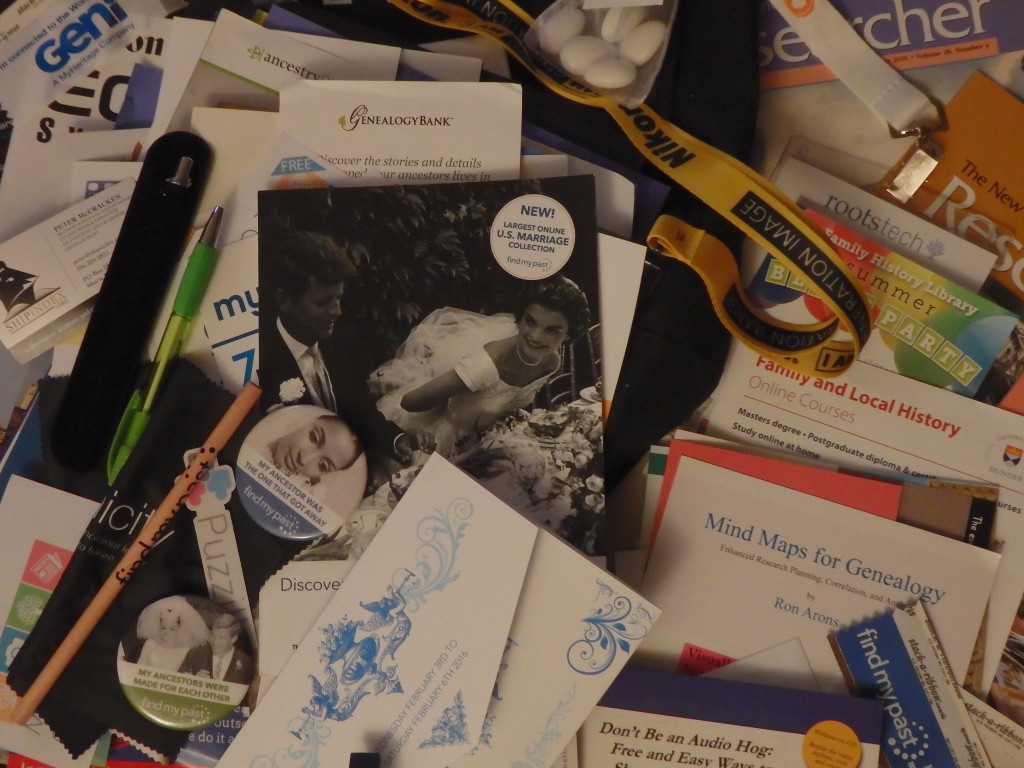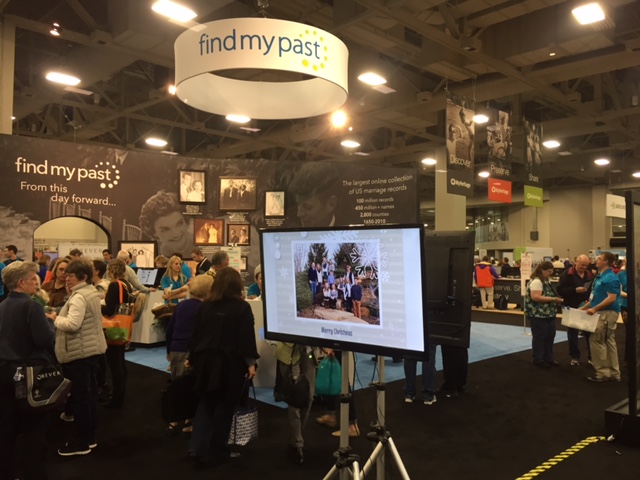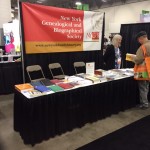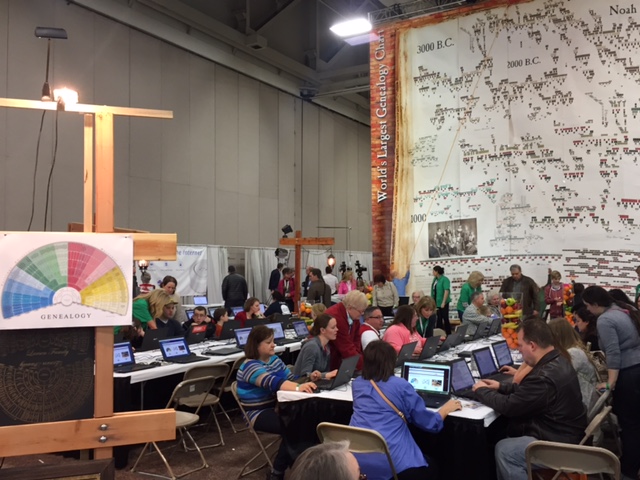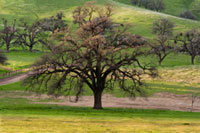Did you tear up when the episode of “Who Do You Think You Are?” took us to a workhouse? Does your stomach tighten at the thought of families enduring this hardship, and your heart ache at the thought of the very young children being taken away from their parents?
Imagine how it feels when you see records from the workhouse that contain your ancestors’ names.
My Great Grandmother never spoke of her family. The only thing that her Grandchildren knew was that she was born in England. In fact, she rarely spoke to her Grandchildren at all. Researching her has been challenging. Recently I had some help finding her census records, and in one, she, her mother and her siblings, are in the workhouse.
Here are three things to check if you find your ancestors in the Workhouse. Make sure you are ready to go forward and take these three steps.
1) Where are they in the next census?
Search for family members in the next census after you find them in the Workhouse. This can be done with an international subscription to Ancestry.com, FamilySearch or on The Workhouse website (described below). Be advised that the census records on The Workhouse website are transcribed, and that family members entries may appear out of order. You will want to locate the actual image of the original census page.
2) When you are ready to face bad news, check for family members’ death records for the registry district.
Use a Birth/Marriage/Death index such as FreeBMD. Indexing of the BMD records for the UK is ongoing and may not be complete, but it is worth checking. It is possible that some of the family members may have died while there.
3) Find the resource that hold the records to verify that this is your family. The best records would be the admission and discharge.
There is a very informative website about the The Workhouse. (Watch out for the numerous ads!) The website includes the history of each Workhouse and what repositories may be available. The webpage for the Bolton Workhouse contains links for the staff and inmates in the censuses of 1841-1891. It also has a link to the Bolton Archives and Local Studies Service.
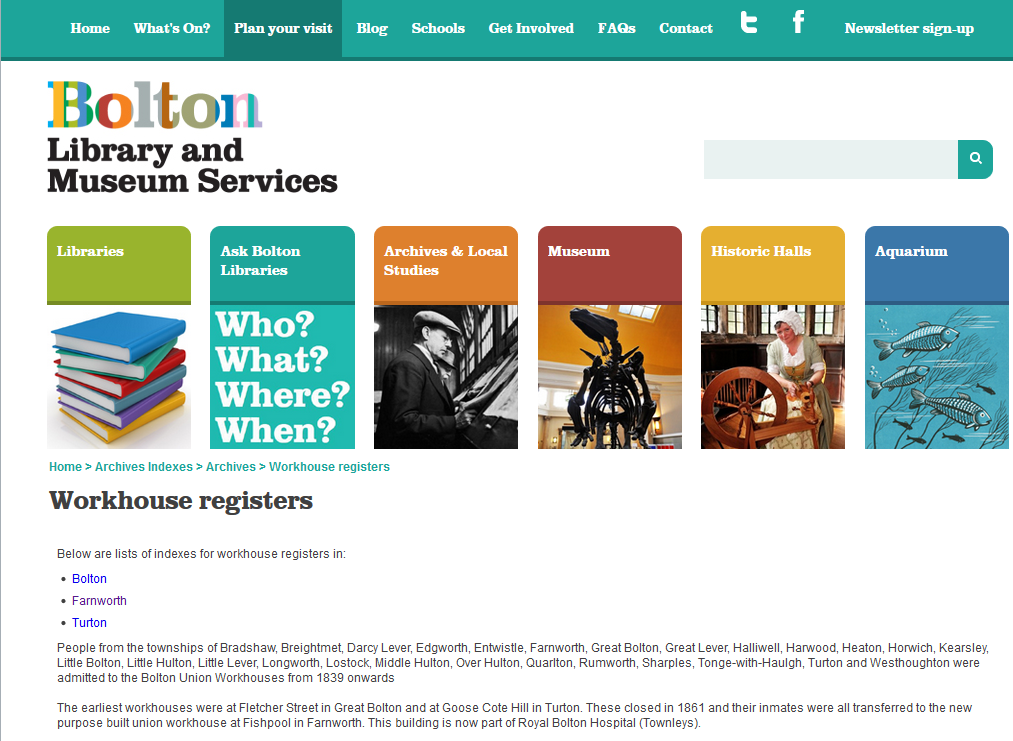
From the page of Archives Indexes, I selected Workhouse registers.
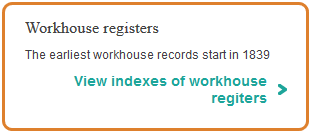
The Workhouse registers webpage showed which records are available at their Research Centre. From 1839 onwards, the people admitted to the Bolton Union Workhouse were from the townships of: Bradshaw, Breightmet, Darcy Lever, Edgworth, Entwistle, Farnworth, Great Bolton, Great Lever, Halliwell, Harwood, Heaton, Horwich, Kearsley, Little Bolton, Little Hulton, Little Lever, Longworth, Lostock, Middle Hulton, Over Hulton, Quarlton, Rumworth, Sharples, Tonge-with-Haulgh, Turton and Westhoughton
From the information on The Workhouse website about the Bolton Workhouse, the were records that would have my family are:
Fishpool Admissions 1861-1880 Microfilm D9:27-31
Admissions 1880-1948 Original GBO/9*
Discharges 1880-1948 Original GBO/9*
I did check to see if FamilySearch held these filmstrips. They do, but the filmstrips have not been digitized.
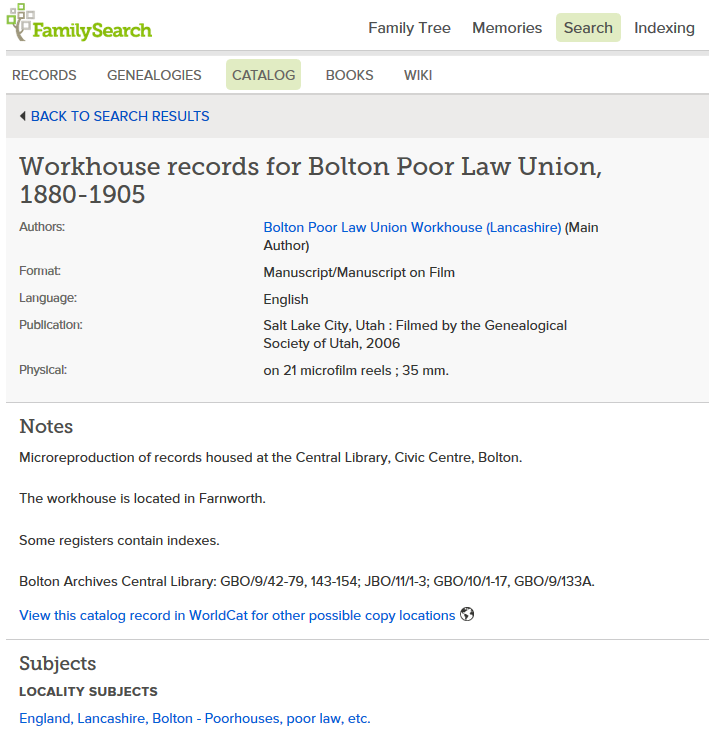
There are quite a few filmstrips I would have to check, and I was not sure when the family would have been discharged. So I investigated another option to learn more.
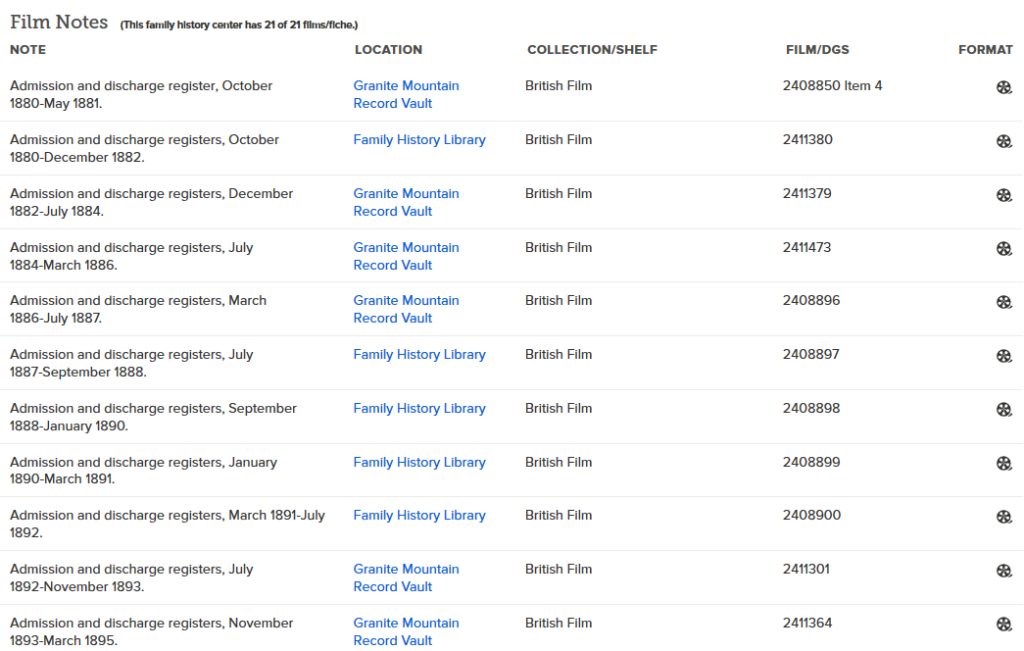
I contacted the Bolton History Centre. My assumption was that the staff there are more familiar with the records than I, and that they have indexes. They will do free research (for twenty minutes) and provide copies of the records at a reasonable fee. I sent them an e-mail requesting the information for the four members of the family, and a transcription of family’s information from the 1881 Census. They e-mailed a transcription of the admission and discharge records. To get copies of the original records required a call during their business hours and a credit card.
The story continues past the Workhouse for my family. They left the Workhouse a year later at the Mother’s request. There’s more work to be done to find out the rest of their story. So far, I only know the fate of one child.

